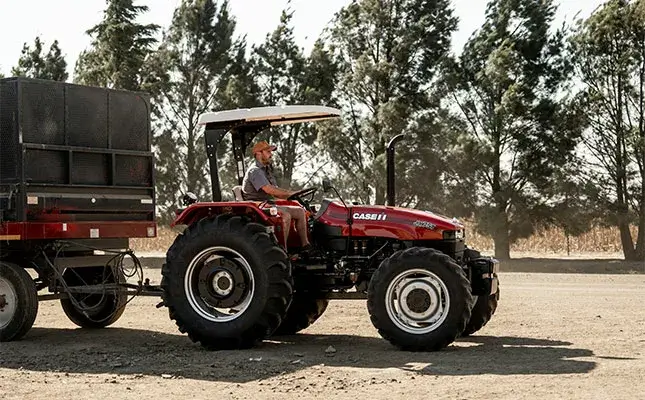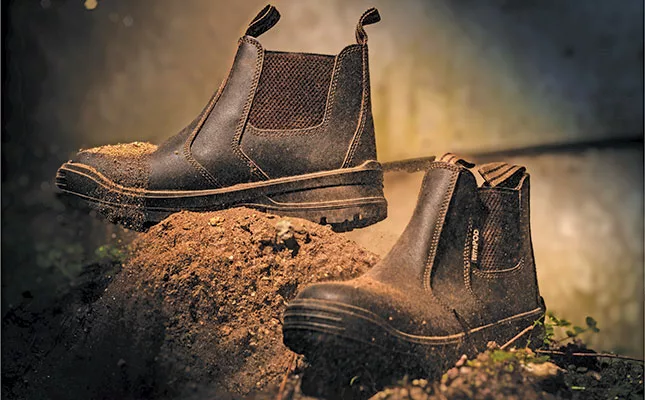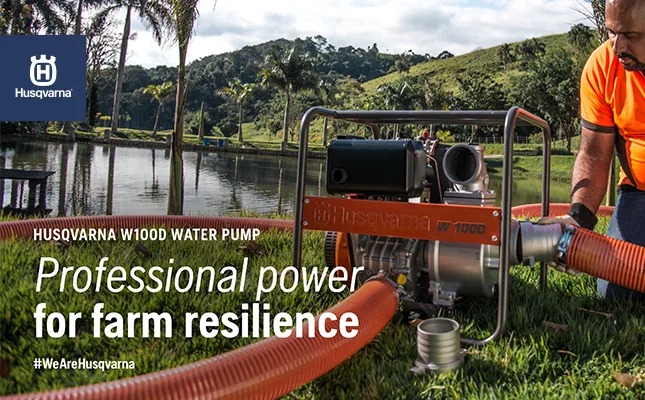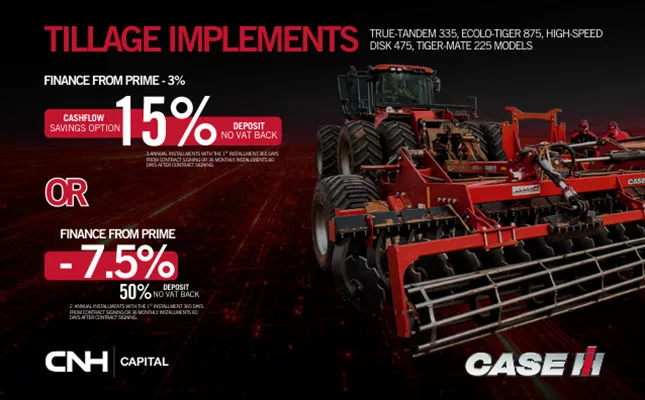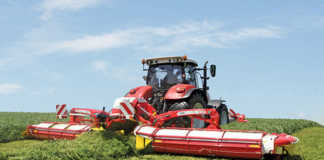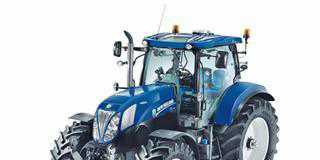
Photo: Glenneis Kriel
About 40 years ago, Italian turbine engineer Vincenzo Caroli revolutionised spray technology in Europe through the development of Vicar blower sprayers in conjunction with LTS in Germany.
What makes this technology unique, according to 88-year-old Mike Heath, a consultant who has seen a whole revolution of machinery in his days, is the fact that it works with radial turbine technology.
This technology has been unavailable in South Africa until four years ago, when Ikapa Trading in Grabouw started importing three Vicar models from LTS.
Improved turbine technology
The technology presents a major improvement on axial flow turbine

technology that has been the standard in South Africa for the past 30 years.
Heath explains that the biggest challenge with all mist blower sprayers is that air cannot be bent, but needs to be manipulated to where it is needed without causing turbulence.
With axial flow blower sprayers, propeller blades are used to move the air. The air moves in a linear direction, parallel to the fan, but then loses speed as it moves into housings and various deflectors to channel it into different directions and aim it on target.
Radial sprayers, also known as centrifugal blower sprayers, do not use a set of propeller blades, but a single turbine that looks like a water wheel, to suck air in.
The air is then moved radially into the enclosed casing at a 90° angle to the inlet.
Curved ducts with special directional fins cast in rotating heads guide airflow to avoid frictional losses between the turbine wheel and the air outlet, resulting in the volume and speed of air being equal from all outlets.
The air sucked in from both sides of the turbine into the patented and unique cast aluminium housing of the Vicar can only get out through calibrated outlets in all models, ensuring a uniform exit speed of air at 540 PTO (power take- off) of 250km/h to 280km/h from the centre of the turbine through the unique casing shape.
The choice of outlets in shape and number drastically reduces the air required to carry the spray mist from between 6 000m³/h and 18 800m³/h, which according to Heath is two to three times less than needed with most axial flow designs.
Unique features
Another feature that makes Vicar blower sprayers unique is that they have spray heads with up to eight nozzles that can be rotated 360° manually or hydraulically to target specific areas of the plant or crop. The nozzles are fixed to each head and move with the air stream to ensure proper coverage.
“Having rotating nozzles and blower heads means that any model can be used on any crop, with the difference lying in the range covered by each model,” says Heath.
The Vicar 540, for instance, has a penetrating range of up to 12m per side and height of up to 25m, making it ideal for large tree crops and hops.
The Vicar 450, which covers a range of 4m per side and a height of up to 15m, was specifically developed for use in vineyards, but is also suited for orchards and general spraying.
The 456 model has six outlets and gives excellent multirow coverage.
Additionally, the technology allows for the direction of airflows to focus the spray jet of plant protection products and negate the effect of air turbulence.
For instance, with young or low-lying plants, only the lower air outlets transport the plant protection product, while the upper outlets are used to create an artificial ceiling of air that ensures the spray mist is channelled in the right direction and kept close to the ground.
Vicar sprayers also come out with an additional tank for clean water, allowing users to flush and clean the spray tanks once an application is done, helping to prevent cross contamination between products and improving the longevity of the tank. The hydraulic agitators ensure proper mixing of any product.
Benefits
Heath says Vicar blower sprayers basically convey lower volumes of air at higher speeds, resulting in greater penetration of foliage of anything from vegetables, flowers, vines, bushes and trees, better coverage on the underside of the leaves and on fruit set, and overall improved chemical use efficiency and spray application outcomes.
The amount of spray that drifts away from the target area is also minimised, greatly reducing the risk of environmental contamination.
In testimony to this, Heath says that Vicar sprayers are one of only a handful of blower sprayers complying with the strict sprayer legislation of Germany and allowed to be sold there.
The models imported by Ikapa Trading have also been submitted to stringent official test protocols done by the independent Julius Kühn-Institut in Germany, covering research and development done in 2002 and 2015.
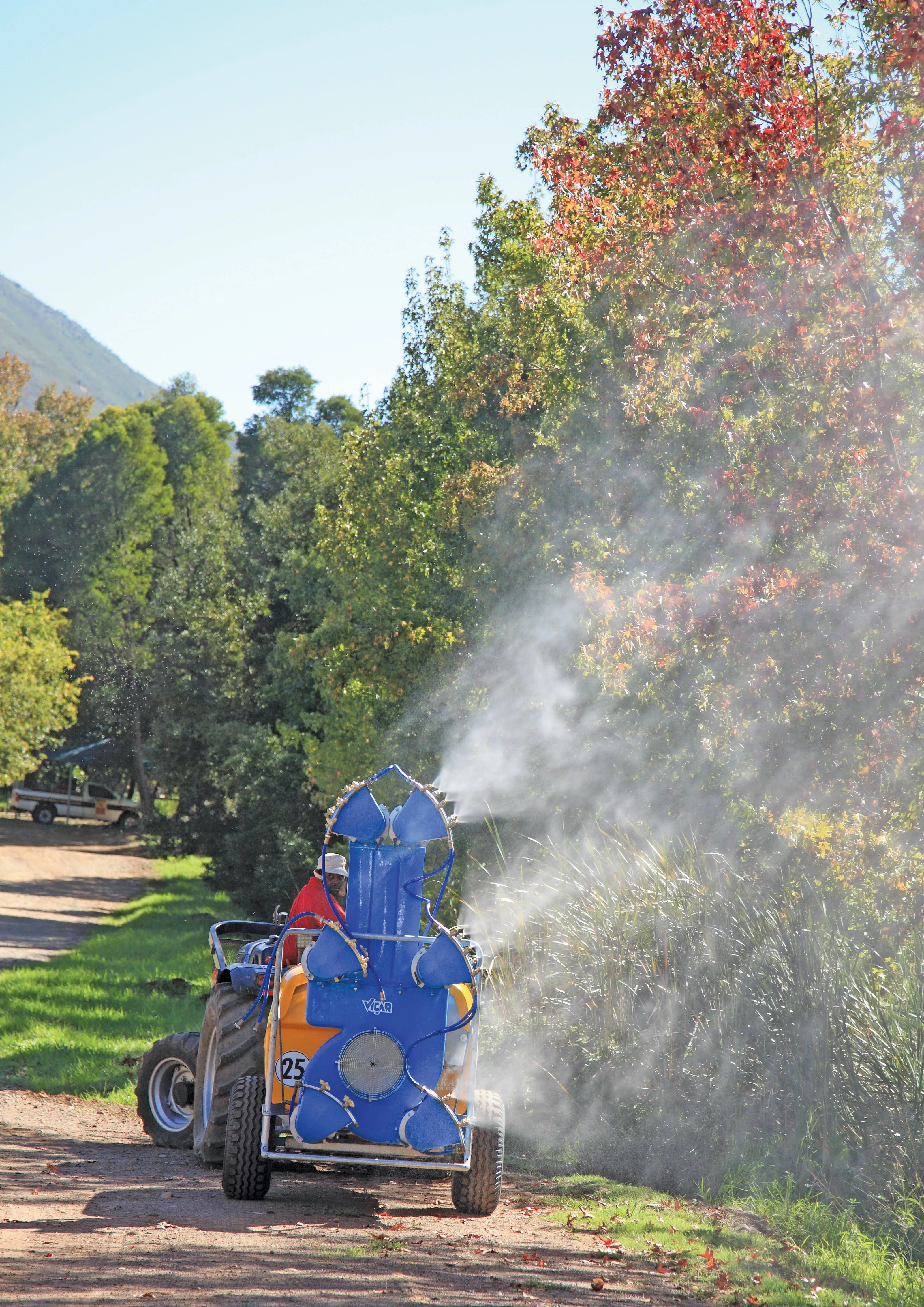
The results confirm superior leaf and fruit coverage, including disease control, but most relevantly, it found up to a 90% reduction in drift and environmental pollution.
What is more, the Vicar blower sprayers, due to the high air speed achieved with a low volume of air, can work up to double as fast as axial fan sprayers, which must be used at an average speed of 3km/h to achieve good coverage.
The Vicar sprayers, depending on the model, are strong enough to cover multiple rows of especially modern high-density plantings.
“Being able to work faster and spray multiple rows is allowing Vicar clients to substitute at least two conventional sprayers with one Vicar sprayer. They are also able to apply crop protection when needed, even under windy conditions, thanks to the use of airflow to manipulate the jet spray,” Heath adds.
More benefits
The Vicar trailed models imported by Ikapa Trading are well suited for rough and hilly terrains. Heath says that they are built on a double axle frame and connected on the three-point linkage arms, instead of the towbar, which helps to equally distribute the weight and reduce the risk of tipping, and allows for smoother travel over uneven terrain.
It also has a short turn system, allowing for smaller and faster turnarounds. The tank slopes from the middle to the outlet on the inside for added stability, and to ensure the tank can be completely emptied even when tilting on hilly lands while spraying.
Along with this, the sprayer wheels are adjustable for greater flexibility in various field conditions and crop row spacing.
Neels Thiart, co-owner of Ikapa Trading, says the biggest challenge for him with the Vicar sprayers so far has been to convince farmers of their benefits: “Farmers struggle to believe that the Vicar can have such great penetration over such a wide range, until we do orchard demonstrations where we prove it by spraying fluorescent tracers onto trees and fruit.”
Another challenge, according to him, is that the industry used to have four well-respected suppliers of spray machines, but that has since increased to more than 20 over the past few years, with numbers steadily increasing as more machines become available from all over the world.
“We advise our buyers to compare what LTS has developed over 40 years to meet European and global protocols when considering which sprayers they should buy,” says Thiart.
Heath points out that the Agricultural Research Council used to evaluate and rate sprayers up until about 1992, as is done in various overseas countries, to help farmers make a better-informed decision when buying this type of equipment.
“It would be great if government could restart this service,” he says.
Thiart says the Vicar sprayers are understandably relatively more expensive than traditional axial fan sprayers, with the price depending on the add-ons selected by the buyers.
He, however, points out that the Vicar sprayer will yield a return on investment within a few years after being purchased thanks to greater efficiency, its ability to cover a bigger area in a shorter time, and ensure maximum crop yield and quality.
He adds that the machines are built to last a lifetime, and are subsequently in high demand in Europe in the second-hand market: “In Europe you are able to sell one of these sprayers second-hand for almost the same price as you bought it.”
For more information email Neels Thiart at [email protected].

